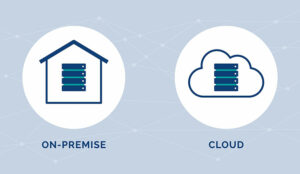Magdalena Horváth of VCC Live discusses the features that you should be looking out for in a cloud contact centre solution in order to best support remote working.
The remote work trend of the past few years has also created a shift in the contact centre industry. Contact centres are increasingly becoming virtual.
Just like traditional call centres, virtual agents handle the same customer support or telesales tasks, with the only difference: they work from home.
We have previously written about the benefits of setting up a remote contact centre. Remote operations can be beneficial not just for employees, but also for companies and businesses.
If you address initial concerns with the right technology and management mindset, a virtual contact centre should be just as or even more productive as an on-premise one.
Remote work can lead to increased productivity and lower operational costs. More importantly, it is essential for any business to be able to keep up business operations in times of uncertainty, such as mobility restrictions.
Already made up your mind? Good. But what features and functions help in actually setting up your remote workforce?
Here are some of the features to look out for in a cloud solution in order to best support remote working.
1. A Quick and Easy Set-Up
When migrating your operations onto different platforms, a quick and easy transition is key. You need to make sure that your business operations won’t lose time, revenue, and clients in the process.
Adopting certain cloud platform software can take as little as a few hours, depending on the complexity of your requirements.
Recently, many large contact centres have been forced to move their entire operations to a remote working environment due to national mobility restrictions.
Many of these contact centres have managed to complete the entire operation in just one day, including physically moving workstations to their agents’ homes.
2. Possibility to Expand Your Channels Any Time
When using a cloud contact centre solution, your administrators should have full access to project settings so that they are able to make changes without having to contact the vendor.
Having this capability is very different from what would happen with on-premise solutions or even most cloud-based boxed solutions.
When thinking about setting up your remote operations, you might have to condiser the cross-channel workflow that best serves your needs.
Perhaps you need to start using channels currently preferred by your customers, like Facebook Messenger or the chat feature on your website.
Maybe you have some special announcements or offers for your clients at times and you need to use mass email or mass SMS sending campaigns.
Alternatively, it might happen that you need to add an additional step to your usual calling activity. For example, you might have to send an SMS confirmation after a call is finished.
With a could cloud platform, you can easily set up all of your preferred channels and modify your workflow whenever it is needed.
3. Security in Your Operations
Besides ease of access and flexibility, reviewing your data and operations security is also one of the fundamental steps in creating a remote work infrastructure.
By reviewing your internal processes, you can assign the appropriate roles and responsibilities to your admins, supervisors, and operators. With this, you can avoid data protection issues or avert project changes that were not approved.
For example, you may want to restrict remote agents’ access to certain data or features, compared to the access offered when working in the office.
With a good cloud contact centre solution, you can easily do that from your administrator panel by just unmarking the relevant elements.
To offer the highest levels of security, look for a combination of expanded user-right options and two-factor authentication. This should be made available within the cloud.
Of course, all solutions should also be 100% GDPR compliant. Ideally, your vendor will be holders of the ISO27001 certificate that proves the highest levels of information and data security within an organization and in its processes, matching GDPR requirements introduced in 2018.
Also, an ISO22301 certificate is important, as it helps to guarantee sustainable business management practices.
Another thing to look out for in a vendor is if they have PCI DSS certificate that applies to any organization that accepts credit and debit card payments.
4. Easily Accessible Data and Call Recordings
With agents working remotely, you want to be sure that all your calls are recorded and safely stored.
Additionally, you might want to switch on call recording even in projects where you did not previously do so.
If so, you want to implement a system where you can easily download and store your recordings locally.
If you often carry out manual database imports, consider using an API to automate your workflow and avoid human error when providing data for your projects.
Perhaps accessing your data storage points is not even an option for admins or supervisors working remotely.
5. Backup Telco Routes
Adding to security, cloud contact centre technology should be based on instantly available backup telecommunication routes. This means that as soon as the system notice anomalies in any telecommunication route, you can instantly switch to alternative routes.
In recent unstable times, when many companies have been facing economic and technological difficulties, it is clear that the instant availability of backup routes is an extremely important advantage.
With default routes built within your cloud system, you have the security of automatic routing modifications whenever there are any problems.
6. Easy Human Resources Management and Monitoring
Contact centre cloud platforms should enable ease of access in your workflow when it comes to monitoring and managing your remote working agents.
To enable this, some vendors will offer an automatic login feature, remote project switching, full access to user management and rights set-ups for supervisors.
Using these systems, supervisors or administrators have complete control in their hands even when working remotely. The technology should also enable the remote transfer of agents between projects as well as the ability to change their status. This means that supervisors can also have closer control over agents’ work time.
Next to remote monitoring, your vendor will ideally take care of virtual agents’ interface as well. You can make sure your agents’ interface stays as simple as possible, while still allowing them to have all the necessary information they need to do their job.
This includes review elements and scripts, which become especially useful when information from their supervisors may take longer than the usual face-to-face question handling. You can decide which dispositions should be made visible for agents or when additional information is required.
Additionally, you can also specify the parameters of your agents’ breaks, with logs and statistics that enable you to get an actual overview of your agents’ work schedules.
User-state logs allow you to keep track of when agents are on a call, log in or out, or how much time they spend on breaks. The log also highlights whenever a break is too long.
Real-time monitoring can also give you direct insights into ongoing agent conversations, and call-whispering features allow you to give feedback or help an agent without the customer hearing. If necessary, you are also able to join agent–client conversations in a conference mode.
In terms of data handling, some vendors will also offer comprehensive real-time analytics and reporting possibilities on all your operations and channels. This means project and user-focused statistics as well as real-time monitoring options with customizable dashboards to fit your business needs.
Finally, user activity logs enable you or your team supervisor to see daily updates, log-in requests or do-not-call registry updates.
You also may be able to utilize vendor dashboards in order to monitor your team results in terms of the most important business KPIs.
In some solutions, dashboards are accessible from supervisors’ mobile devices too, so you can use them from anywhere without the need to stay in front of your computer.
7. Training, Feedback and Motivation Tools
Adapting to an unexpected scenario and switching to remote work is not only challenging for you but also for your employees. State your expectations and the rules of remote working through clear communication.
Additional training sessions may be needed, especially if you are planning to revise your workflow. You may utilize your vendor’s conference mode functions to serve this purpose.
Your employees should also know their work will be assessed just as usual. Remember to give regular feedback to ensure that your agents are doing their jobs well.
If there are points to improve, highlight them, based on examples available in call recordings as well as logs and statistics.
You can easily assess your agents’ work and give them instant feedback using either a quality management tool or by using a simple personal message.
If you do not yet have an in-house quality control team, it may be a good idea to establish one to ensure high levels of customer satisfaction, regardless of the situation you are in.
Last but not least, you can easily communicate with your employees. You can keep them up to date with personal chat messages or group messages, or send updates to your agents using agent news whenever you need to share important information – with the right cloud system of course.
Author: Robyn Coppell
Published On: 4th May 2020 - Last modified: 5th May 2020
Read more about - Guest Blogs, VCC Live















